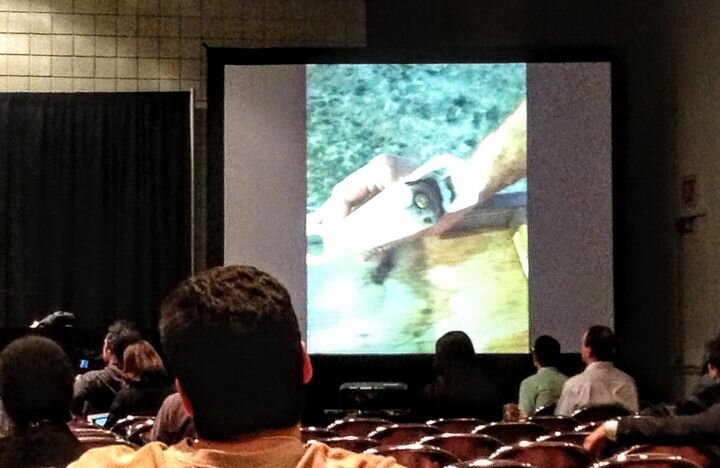![3D printed weapon being presented to the public in 2013 [Source: Fabbaloo]](https://fabbaloo.com/wp-content/uploads/2020/05/image-asset_img_5eb0653608e4c.jpg)
3D printed weapon being presented to the public in 2013 [Source: Fabbaloo]
In a story that’s been unfolding for quite a few years, nearly half the states in the US have petitioned the US federal government to remove 3D printable weapon models.
The saga began years ago when Cody Wilson, then a legal student in Texas, proposed the idea of widely distributing 3D models for printable weaponry. Wilson set up a website and allowed anyone, anywhere to download and 3D print the models to produce handheld weapons. Because of this, Wilson was named as one of Wired’s “15 most dangerous people in the world” in 2012.
3D Printed Weapon Fears
![An actual 3D printed weapon. Note that it has exploded [Source: Fabbaloo]](https://fabbaloo.com/wp-content/uploads/2020/05/image-asset_img_5eb065366ba4f.jpg)
An actual 3D printed weapon. Note that it has exploded [Source: Fabbaloo]
As you might imagine, this hit the news hard and there were multiple reports on the project, some of which we reported. Many had fears of bad actors using these plans and DIY 3D printers to produce undetectable weapons that could in theory be easily transported through security checkpoints at airports, schools, businesses and other places where people gather.
These fears were largely unfounded, as the materials used by 3D printers are simply ineffective for this application. Commonly available thermoplastics cannot withstand the explosion of a bullet, unless you’re lucky. In fact many who experimented with the weapon print found the device could easily explode in one’s hand, making it in all likelihood more dangerous for the user than anyone else.
A second fact was often ignored by those fearing these undetectable weapons: they require bullets, which are made from metal. Without ammunition, the weapons are essentially harmless hunks of plastic. And those metal bullets would have some challenges passing through security checkpoints due to their composition and volume.
Finally, the ability to produce an unregistered weapon has been something achievable by many parties for decades by using commonly available metalworking equipment. These frequently found machines can easily make a fully functional weapon, and no one has questioned their ability to do so. If no machine is available, one could likely purchase a weapon on the black market for less than the cost and trouble of 3D printing a crappy plastic weapon.
3D Printed Weapon Developments
![3D printed weapons promoter Cody Wilson [Source: Fabbaloo]](https://fabbaloo.com/wp-content/uploads/2020/05/image-asset_img_5eb06536abc57.jpg)
3D printed weapons promoter Cody Wilson [Source: Fabbaloo]
Since the opening of Wilson’s file archive, the US government stepped in and shut it down. Their angle was based on the laws restricting export of weapon designs to foreign powers. As the files were made generally available on the Internet, they were, in a manner of speaking, “being exported”. Thus the US government had reasons to shut them down.
However, a change in administration in the past few years reversed that decision and the files have gone back online, albeit with restrictions allowing only US residents to access them. Of course, this is pretty meaningless as once the files are released, the second parties can send them on to any third party they wish.
In the meantime Wilson was accused and convicted of felony crimes in 2018 and after being apprehended in Taiwan was sentenced to seven years of probation, fines and community service.
States Petition on 3D Printed Weapons
![Some of the signatures on a letter to the US federal government [Source: Government of NY]](https://fabbaloo.com/wp-content/uploads/2020/05/image-asset_img_5eb06536eb4f6.jpg)
Some of the signatures on a letter to the US federal government [Source: Government of NY]
This week a letter was sent to the US Secretary of State and the US Attorney General on behalf of 24 states and DC, including: Washington, California, Colorado, Connecticut, Delaware, Hawaii, Illinois, Iowa, Maine, Maryland, Massachusetts, Michigan, Minnesota, Nevada, New Jersey, New Mexico, New York, North Carolina, Oregon, Pennsylvania, Rhode Island, Vermont, Virginia, Wisconsin, and the District of Columbia.
The letter specifically asks the US federal government to stop distribution of plans for 3D printable weapons. They say:
“It appears that Defense Distributed, a company run by a ‘crypto-anarchist’ dedicated to ‘evading and disintermediating’ federal and state gun-safety laws, has recently resumed making computer files for the production of 3D-printed firearms available on its website. On behalf of the citizens of our states, and in the interest of preserving public safety and security throughout the United States, we strongly urge the federal government to act swiftly, using both its civil and criminal enforcement power, to ensure Defense Distributed’s compliance with federal law.”
And:
“If the federal government fails to act, these files will be distributed widely with potentially grave consequences for our national and domestic security. The efficacy of our country’s existing metal detectors—a ubiquitous security device in our airports, schools, arenas, and public venues—will be compromised if you do not act.”
As of yet there has been no response by the US federal government, but as the same administration allowed the service to resume, it is likely they would ignore this request.
While I am of the opinion there is little actual risk due to the impracticality of printable weapons, it may be these states are thinking towards the future, when that may no longer be the case. It is possible that future developments in personal making technologies could reach a point where 3D printed weaponry is actually feasible.
These states may be wishing to set precedents and organize legal frameworks in advance.

